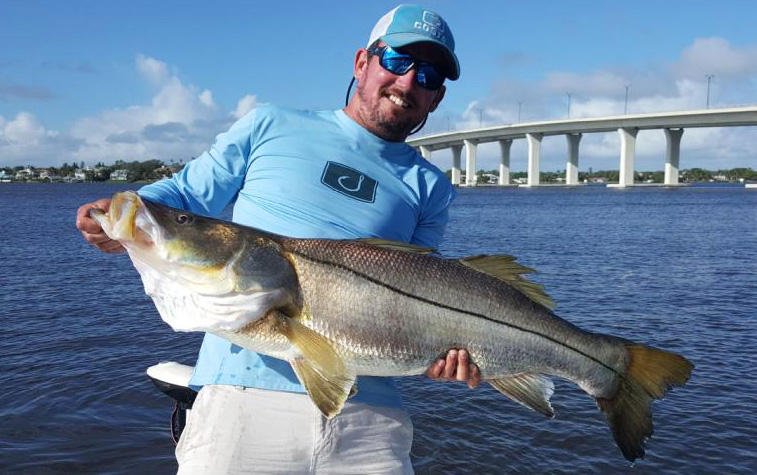From the Florida Keys to your home flats, universal lessons on sight-fishing shallow water.
![]() A single bonefish “floats,” with tail and dorsal exposed.
A single bonefish “floats,” with tail and dorsal exposed.
On the edge of the Gulf of Mexico and Florida Everglades is a tiny, less than 2-acre grassy knoll. This spot fills up with some of the biggest redfish in the area when the first fall cold front passes through South Florida. I stumbled upon the site in the 1980s, running by and blowing up fish. They were large enough to be small tarpon, which I thought they were, when I stopped, but on closer inspection I was surprised by their true identity and size.
I privately held it as one of my very own top secret spots. Some years later, I drove by it with Al Pflueger, Jr., on board. Pflueger, always graciously willing to share his vast knowledge, pointed to the flat and described everything I’d learned about that obscure bank, and much, much more. I thought I’d invented the wheel, but Pflueger (scion of the famous Miami taxidermy house and a light tackle expert) had been routinely catching trophy fish there since the 1960s.
Odds are you’ve been surprised by redfish, too. Despite popular conceptions, these fish don’t just swim around waving bronzed tails like flags for us to see. Unless they are squeaking across mere inches of water, reds can be downright subtle.
Fish a spot with the dedication of a guy like Pflueger, and you’ll recognize nuances unique to that location. You’ll see patterns in gamefish behavior according to seasons, tides and weather conditions.
![]() Close dark shapes in foreground are sponges and clumps of weed. Farther back is school of bonefish. Scanning the water and knowing what to dismiss and what to focus on, is a big step toward becoming a successful flats fisherman.
Close dark shapes in foreground are sponges and clumps of weed. Farther back is school of bonefish. Scanning the water and knowing what to dismiss and what to focus on, is a big step toward becoming a successful flats fisherman.
But regardless of your experience level, there’s one thing you can do—right now—to improve your sightfishing success: Discipline your eye to look for your target first, then at it once the bullseye is locked.
Whether hunting for redfish, tarpon, permit or some other gamefish, a trained, experienced eye scans and unconsciously dismisses peripheral distractions, then tightly focuses on something encouraging, the desired target.
As for redfish, they are among the most wide-ranging and popular saltwater gamefish in the southeastern U.S.
It’s a fact that most fertile redfish flats, especially in South Florida, are peppered with almost non-stop mullet activity. Experienced anglers know that the flashing, splashing and perpetually moving mullet leave a far different footprint than the slower, more deliberate reds.
Sometimes a brief glance at a sliver of the darker, broom-like tail is the only confirmation of the presence of a stationary red. “Waking” redfish are on the move, and they’ll generally push a larger wave than mullet, and when mullet give way to this hump, it’s yet another sure indication of a carnivore.
Another fish found in many of the same areas is the black drum. The drum’s lighter colored, exposed rear end and sometimes vertical striping sets him apart from the red. Tailing drum are a common sight in some areas. They aren’t as quick to pounce on a fly or jig—nor are they quite as strong as a redfish—but they are an interesting target, for some anglers.
Both of these tasty fish make “muds” when they’re digging up crabs, shrimp or other organisms. The signature of this activity might be confused with the activity of mullet, but reds and drum usually leave slightly larger, denser balls of dissipating “smoke” than the mullet.
![]() A fine redfish from Florida Bay.
A fine redfish from Florida Bay.
Bonefish share some of the traits of redfish, but leave their own unique calling cards. In the Florida Keys, calm waters early and late in the day will reveal the most tailing bonefish. Waving and glistening fins are obvious. Tiny, quickly disappearing ringlets every 10 or 15 feet can mean a pack of bonefish barely tipping up and advancing.
While easy to see on the glassy surface, these slick water silver bullets are much more difficult to fool than reds or other neighbors. Judging from the frequent reactions of these wary fish, even a small shrimp, crab or jig entering the water must appear to them like a truck plunging off a Keys bridge. A flyline might roll out like a bowling ball coming down the alley.
Asked about their favorite conditions for stalking these wary fish, veteran anglers in the Keys will commonly say they prefer wind, and lots of it. A large percentage of the true giants, double digit “slobs” as they are locally called, have been taken during nearly prohibitive periods of weather. These big torpedoes temporarily let down their guard.
![]() From author Mark Krowka’s Florida Keys files: A windy weather bonefish.
From author Mark Krowka’s Florida Keys files: A windy weather bonefish.
But just how do you see them in all the wind? Many mudding bonefish are taken in 2 to 4 feet (even more, sometimes) of water, in depths where their presence would never begin to affect the surface. Both wind and tide move water. A stiff breeze and current can elongate muds into obvious, discolored stripes on even the darkest grassy bottoms. Even if the bodies aren’t apparent, you can make an educated guess as to their location, slightly upcurrent or sometimes crosscurrent of the developing dirty pattern. Sometimes, it’s just as simple as connecting the milky dots.
Headwaking schools of bonefish en route to a postdawn area of deeper water are visible to the observant eye, also. Guides call this “nervous” or “funny” water, and normally it has a very specific direction. It’s easy to spot when it’s calm, and in wind appears as a rumble against the lay of the grain. Maybe it should be called “different” water.
Depending upon speed, of course, the shot should always be in front of the center of the school, rolling one in the sweet pocket. This cast gets the most eyes on what you’re tossing. More importantly in the case of larger, smarter bones, this placement keeps the formation and direction forward and naturally competitive. A wide shot off of a corner can break the pattern and suspiciously disrupt normal swimming direction.
![]() This angler is paying careful attention to how a fish is reacting to his retrieve.
This angler is paying careful attention to how a fish is reacting to his retrieve.
It’s even possible to sightcast to fish that you can’t see. During a past Redbone Celebrity Tournament, off Elliott Key, on an overcast, chilly and wintry November day, frontal winds blew at over 20 mph. Large masses of northbound bonefish were showing up, and blowing up a few yards off our bow. Scott Deal and I were frustrated that we couldn’t see these golden opportunities in time to cast. More carefully observing, we noticed ballyhoo skipping out of the way every 5 minutes or so, and coming in our direction a few hundred feet down the island. Then more baitfish would tailwalk in increasingly closer increments. Deal, a boatbuilder and pilot, cast blindly using only his internal instruments and took several bonefish that we never actually saw. These bones helped him eventually win that tournament. He estimated speed, yardage, and used the only available signs, the terrified ballyhoo. In other words, he guessed!
Permit will do many bonefish-like things. They will mud, usually with less frequency than bonefish. A 30-pound-plus silvery disc on the dig can drift out quite an impressive plume indeed. A tailing permit in the shallows is hard to miss with its elongated black paddle and curved dorsal fin. But most permit caught sightfishing are sub-surface and not tailing. Unlike bonefish, permit will occasionally “spike up” in channels, deeper basins and over wrecks and other structures, both manmade and natural. Blacktips, underwater flashing and sparkling glints of sunlight off shiny fins and backs will give these white lippers away.
Look for generally darker shapes in 2 or more feet of water swimming, mudding alone or in groups. Sometimes permit will be parked and waiting where a flat drops off or comes to a point. Again, not visibly bothering the water.
![]() Al Pflueger, Jr., with one of the trickiest sight-fishing targets, a shallow-water permit.
Al Pflueger, Jr., with one of the trickiest sight-fishing targets, a shallow-water permit.
Yet another way of finding permit whenever poling around a channel, eddy, or tide rip, is to keep an ear open. You might hear one! A permit kissing a crab or shrimp out of a glob of floating weed is one of the most spine-tingling audibles in all of fishing. It’s a unique noise that is not guttural like a snook or tarpon, but very much like the sound of a giant lit cigar being put out in a shot glass.
Thank goodness for the tarpon, making heroes out of us all. These big animals pop, gurgle, free-jump and roll. Nothing very sophisticated to look for, most of the time. But all that glitters might not always be silver. Many times, the more cavorting the silver king, the more they are shut off. Techniques of locating tarpon have filled countless books. When they are not rolling, even the biggest rockets can be surprisingly covert. Even 6-foot, laidup logs can go virtually undetected on days of marginal visibility. Light bottom may expose tarpon, but it is widely agreed upon that finding them there makes them much tougher to deceive.
Successful tarpon fly fishermen purposely look for an “event.” They strategically pick an area of busier water. There’s no question that a lee with white sand will afford great sighting. However, a recipe of current, sketchy bottom and tainted water will assist in great biting. Tarpon will sometimes appear only as a slight discoloration, moving at a different rate than surface or subsurface weeds.
Migrating tarpon can cut an impressive headwake into all waters, calm or choppy. In almost every case they are moving faster than their posture would appear. You just wouldn’t think a school of 100-pound fish would be tough to pick out. They can be upon you and aware in just seconds.
In the words of the late, great, legendary pioneer Capt. Jimmy Albright, “If you can see it, you can certainly catch it!” SWA
First Published in Florida Sportsman’s Shallow Water Angler Magazine May 2014
The post Sight-Fishing Shallow Water appeared first on Florida Sportsman.
 Bouillabiasse – made delicious with your own Florida seafood catch.
Bouillabiasse – made delicious with your own Florida seafood catch. 





 The recreational open season for snook starts Sept. 1 statewide.
The recreational open season for snook starts Sept. 1 statewide. 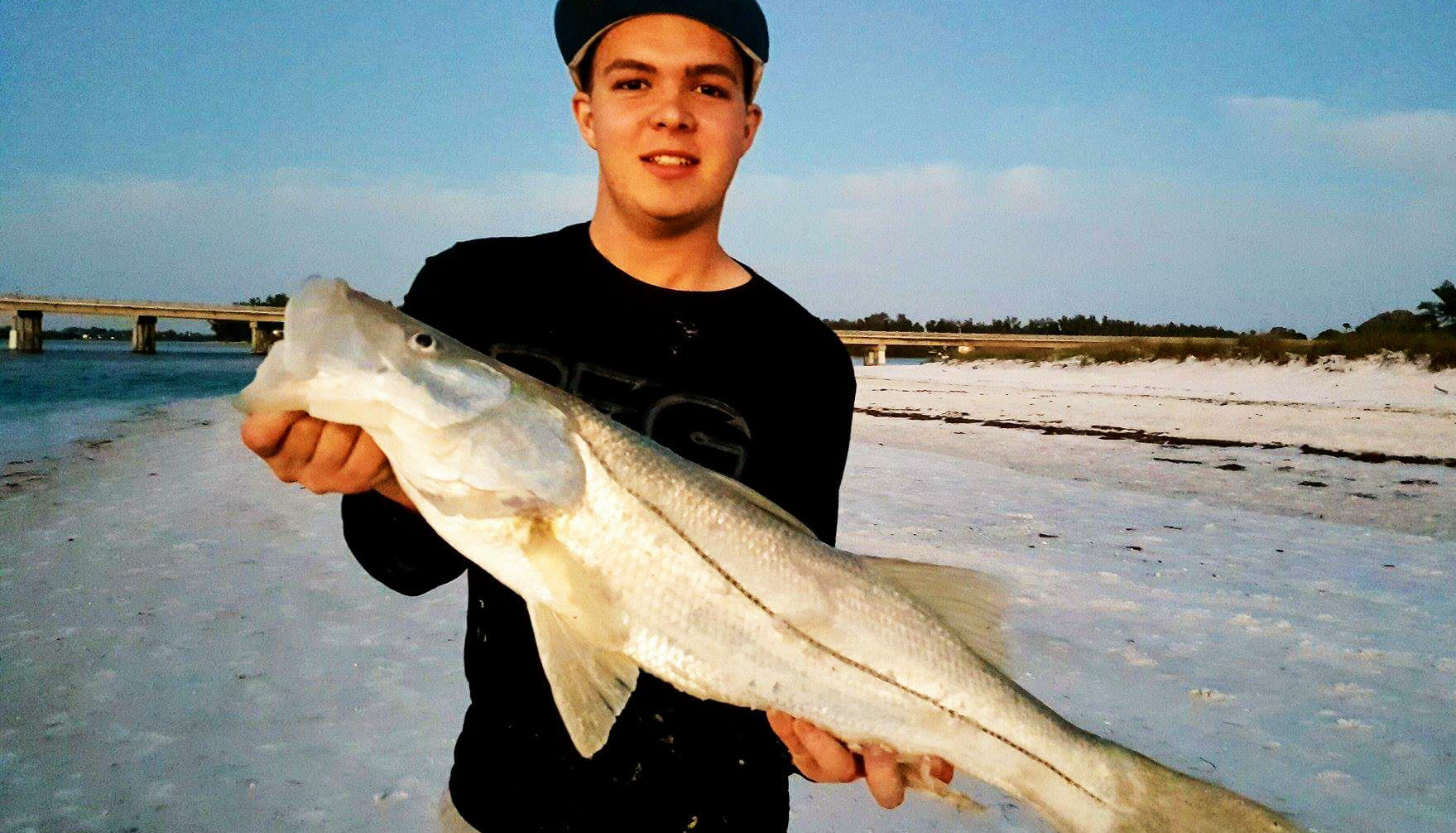 Before: The authors son, Matthew Benecke, caught this beauty off Anna Maria Island on a Yo-Zuri Crystal Minnow.
Before: The authors son, Matthew Benecke, caught this beauty off Anna Maria Island on a Yo-Zuri Crystal Minnow. After: This snook sure cleans up nicely.
After: This snook sure cleans up nicely.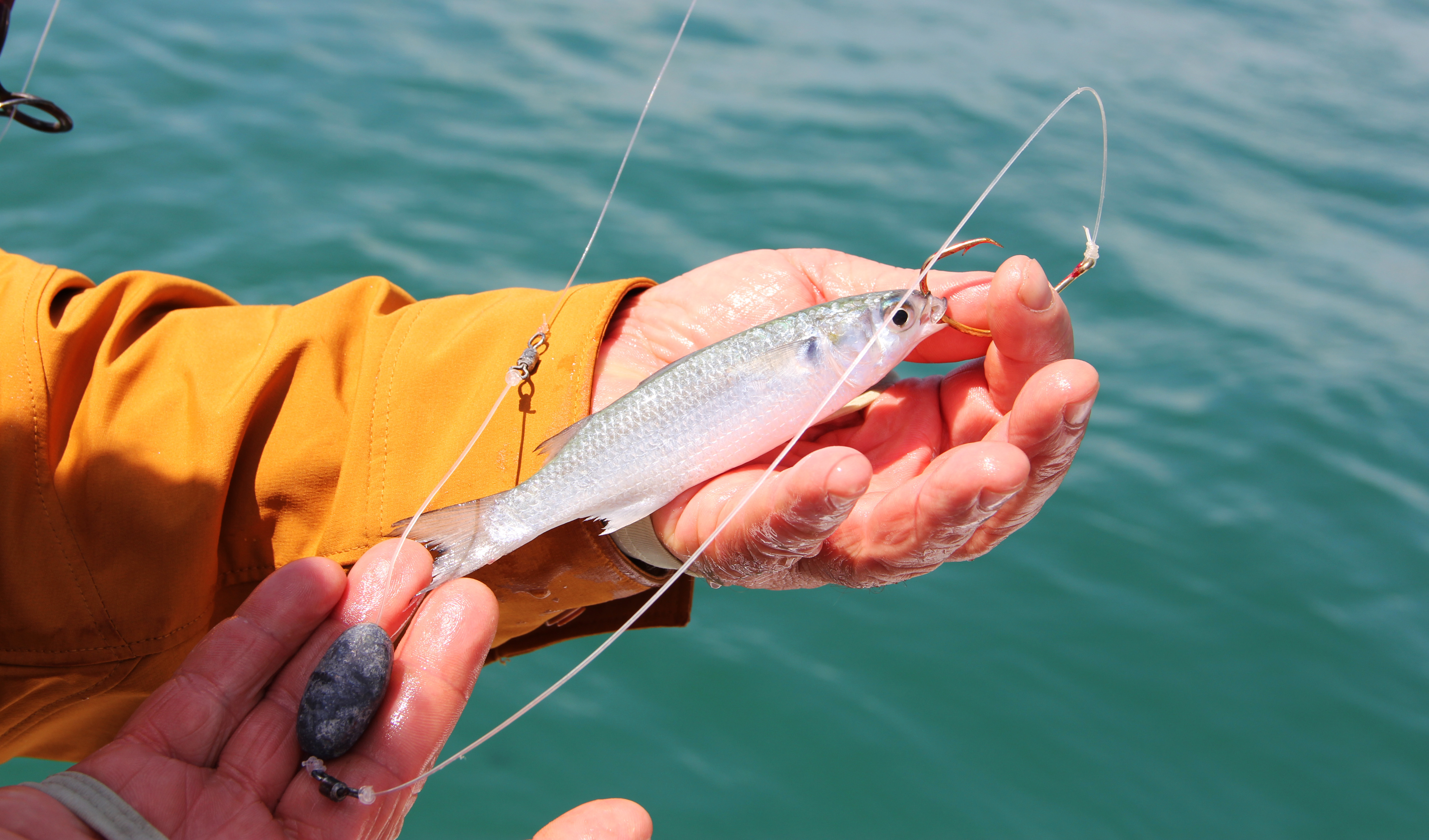 Want to keep the bait on bottom while allowing a little slack for the bite? The Jupiter rig does just that. Pictured is finger mullet.
Want to keep the bait on bottom while allowing a little slack for the bite? The Jupiter rig does just that. Pictured is finger mullet.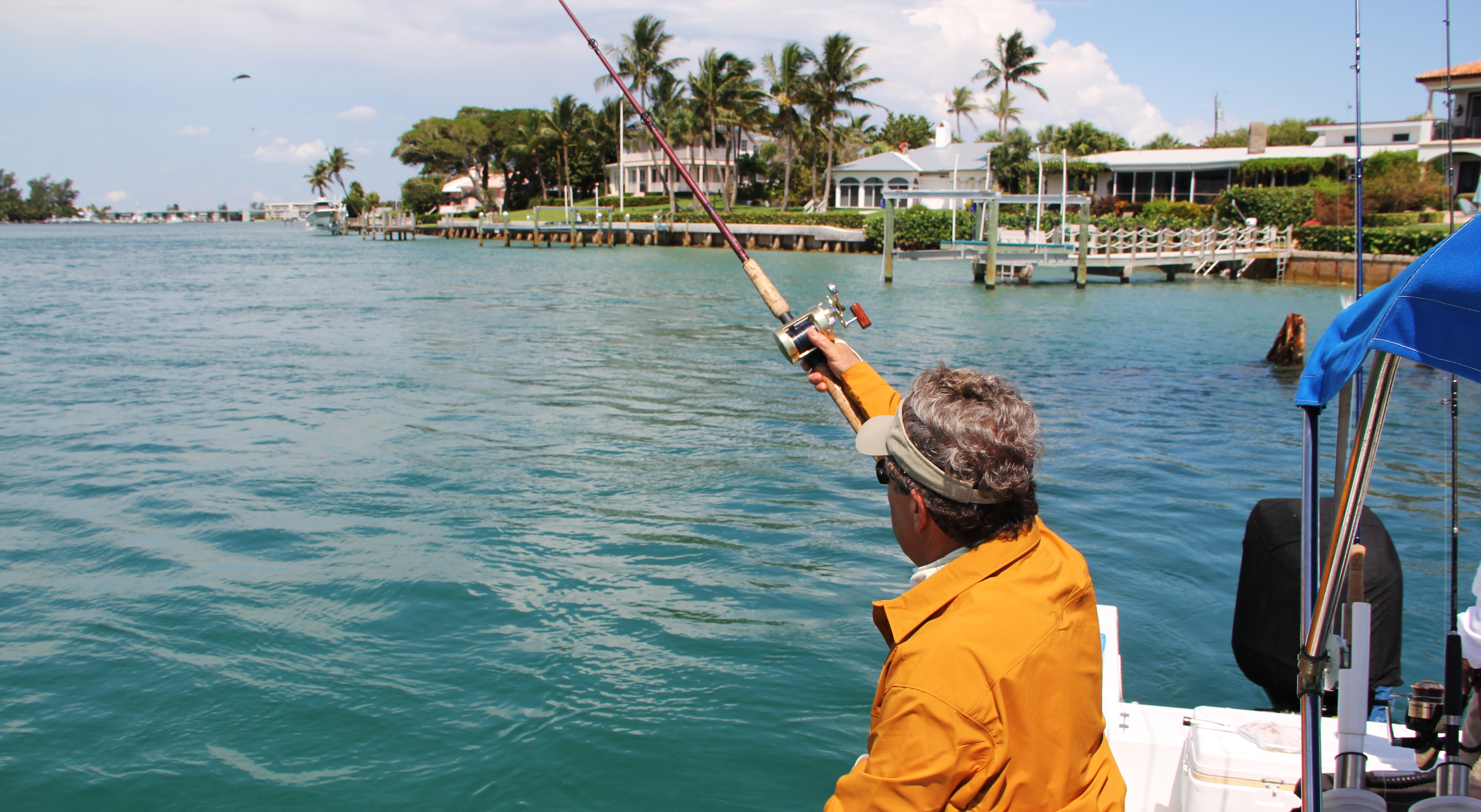 Because the line does not keep sliding through the sinker, it’s possible to make long, accurate casts with this rig.
Because the line does not keep sliding through the sinker, it’s possible to make long, accurate casts with this rig. A single bonefish “floats,” with tail and dorsal exposed.
A single bonefish “floats,” with tail and dorsal exposed. Close dark shapes in foreground are sponges and clumps of weed. Farther back is school of bonefish. Scanning the water and knowing what to dismiss and what to focus on, is a big step toward becoming a successful flats fisherman.
Close dark shapes in foreground are sponges and clumps of weed. Farther back is school of bonefish. Scanning the water and knowing what to dismiss and what to focus on, is a big step toward becoming a successful flats fisherman.  A fine redfish from Florida Bay.
A fine redfish from Florida Bay. From author Mark Krowka’s Florida Keys files: A windy weather bonefish.
From author Mark Krowka’s Florida Keys files: A windy weather bonefish. This angler is paying careful attention to how a fish is reacting to his retrieve.
This angler is paying careful attention to how a fish is reacting to his retrieve.  Al Pflueger, Jr., with one of the trickiest sight-fishing targets, a shallow-water permit.
Al Pflueger, Jr., with one of the trickiest sight-fishing targets, a shallow-water permit. Writer with overslot snook caught on a 4-inch, 1/4-ounce Storm 360GT Shrimp. He was casting and reeling across-tide near docks.
Writer with overslot snook caught on a 4-inch, 1/4-ounce Storm 360GT Shrimp. He was casting and reeling across-tide near docks.  A slow glide to the bottom, followed by a quick upward snap, is a good technique.
A slow glide to the bottom, followed by a quick upward snap, is a good technique.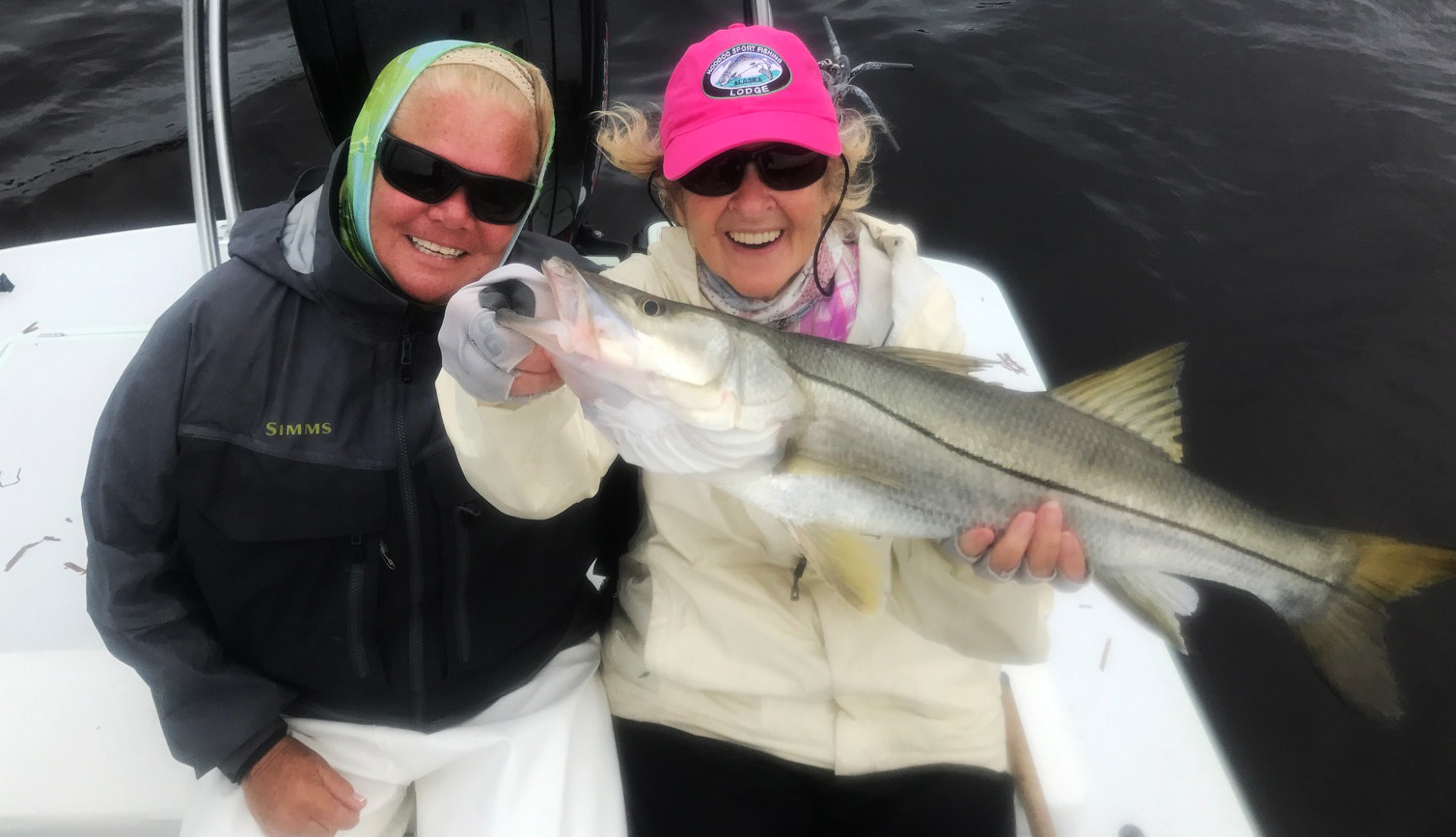 Lisa Everett and Gail Kennedy holding up one of their many snook.
Lisa Everett and Gail Kennedy holding up one of their many snook. Top Guided Team: Lisa Everett, Capt. Larry Sydnor, and Gail Kennedy McManus
Top Guided Team: Lisa Everett, Capt. Larry Sydnor, and Gail Kennedy McManus Top Unguided Team: Kyle Velunza, Nelson Padron, and Karina Kempter
Top Unguided Team: Kyle Velunza, Nelson Padron, and Karina Kempter


